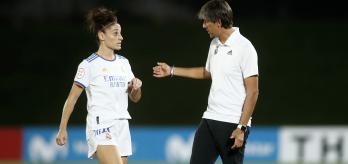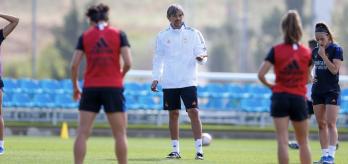In the first two sessions in this series, David Aznar explained the concept of a game model and described how such models can be developed on the training ground. Here, he sets the idea of the game model in the context of the "competitive microcycle," examining exactly how coaches use the time between matches to prepare their teams to compete and win. The webinar is presented in four parts, and is followed by a Q&A.
Most people have the will to win, few have the will to prepare to win.
Watch webinar
Read summary
Part 1: What is the "competitive microcycle?"
The first part of this session summarises various approaches to the "competitive microcycle," or how teams and coaches organise their workload during any given week. The microcycle encompasses a series of steps, including analysing your team's own performance and how the opposition will play. However, football is not played on paper, and there is no guarantee any plans you make will work on matchday. Coaches also have to take other factors into consideration, including form, fatigue, and how well their team's game model has been working in recent matches.
Part 2: Analysing for success
The second part of the webinar covers how to analyse your team's performance. Aznar begins by listing some of the questions he might ask his team the day after a match, then goes on to explain how he uses some of the data collected by his coaching staff to give his team more insight into how an individual match unfolded and where they can improve. As he is at pains to stress, this has to be a constructive process; constantly criticising players makes it harder to work with them.
Part 3: Drawing up a gameplan
This section is about how to analyse your opposition, come up with a gameplan, and train your squad to carry it out. Once you have identified your opponent's weaknesses, you can develop strategies to exploit them, but even the best plan can only work if your players know what it is, so it is imperative the whole squad is well briefed. The plan might involve minor tweaks to your game model, but abandoning it entirely is likely to cause confusion and should be avoided.
Part 4: Spreading the workload
To conclude the webinar, Aznar details how he prepares his players in the run-up to matches, from analysing his own team's performance in their last game to sussing out the opposition and even practising set-pieces. He also explains how he gives players individual training goals and encourages them to take responsibility for these objectives alongside the team's overall aims. He finishes by revealing what he does on a matchday and how he can use information collected during a game to change the course of the match.
Q&A
00:34
Some recent articles have suggested that fatigue among coaches can stop them thinking clearly. How do you allocate your time to stop that from happening to you? How do you switch off?
04:06
I wanted to ask you about the interpretation of "Matchday +1" (MD+1) and MD+2, and MD-1 and MD-2. The coach makes the final decision on that and there's a disagreement between different coaches about when you train and when you rest immediately before and after games. Can you explain how you decide how much work to do on those days?
09:27
How do you distribute the training load over the last few days of the week?




















.variant64x64.png)


.variant348x164.png)

